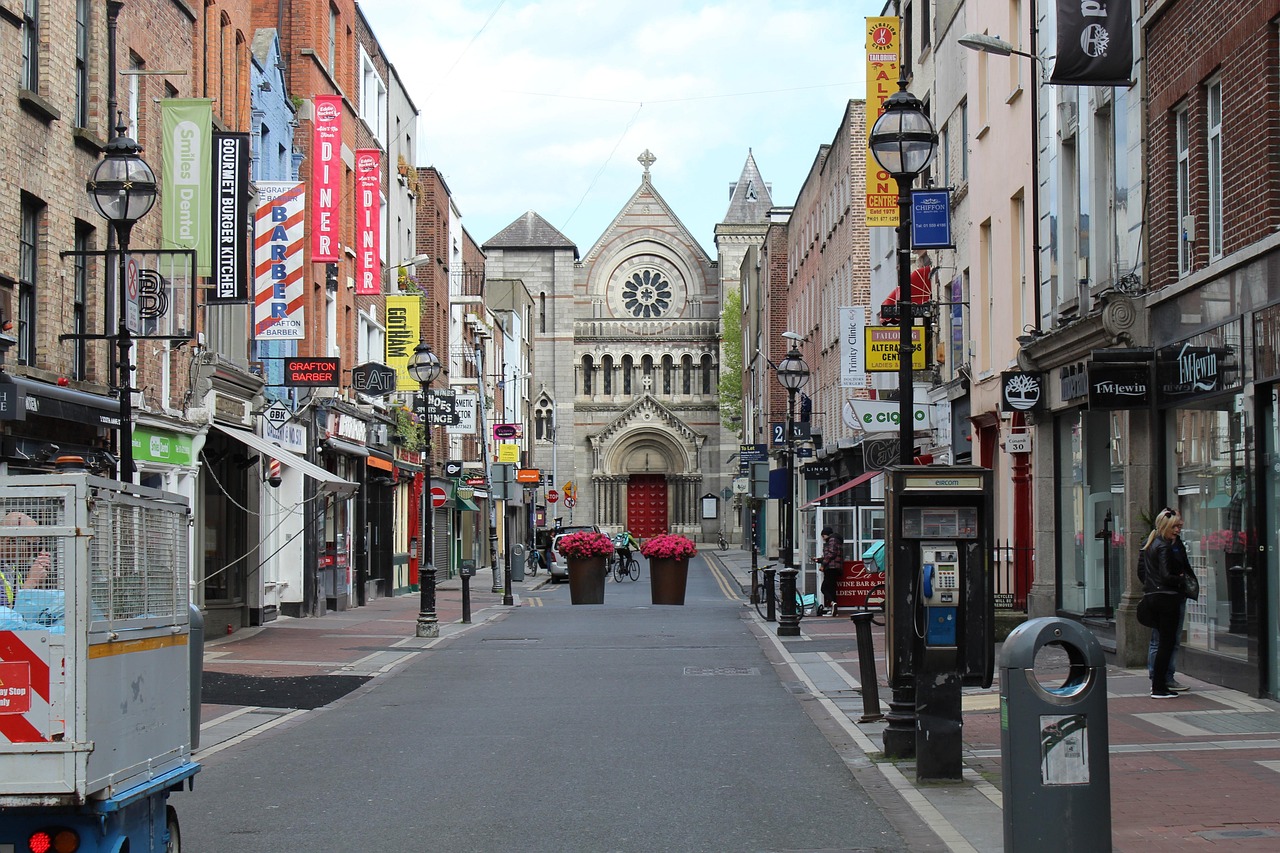Ways To Get Around Dublin

Strong 8k brings an ultra-HD IPTV experience to your living room and your pocket.
Transportation in Dublin for Students
1.Bus
Dublin’s bus network, operated primarily by Dublin Bus, is one of the most extensive and affordable ways to navigate the city. With over 100 routes, buses connect the city centre to suburbs, coastal areas, and key destinations like Dublin Airport. The service runs from approximately 5:00 AM to midnight, with some Nitelink routes operating on weekends for late-night travel. uhomes.com provides many student accommodation Dublin that close to the bus station, and easy for you to take bus to the popualr spots in a short commute time. Real-time tracking via the Dublin Bus app or TFI Live helps passengers plan journeys efficiently. Fares are calculated by distance, starting at €2.15 for short hops (using cash) or discounted with a Leap Card (€1.55). Key routes include the 16 (to Dublin Airport), 46A (to Dun Laoghaire), and the 145 (to Tallaght). Buses are frequent during peak hours but can face delays due to traffic. For tourists, the Hop-On Hop-Off sightseeing buses offer narrated tours of landmarks like Trinity College and Guinness Storehouse.
2.Luas (Light Rail)
Dublin’s Luas tram system is a fast, eco-friendly way to travel across the city. It has two lines: the Green Line (running from Brides Glen to Broombridge) and the Red Line (connecting Tallaght/Saggart to The Point). The Green Line passes through key areas like St. Stephen’s Green, Merrion Square, and O’Connell Street, while the Red Line serves Heuston Station, Smithfield, and Dublin Docklands. Trams run every 5–10 minutes during peak times and accept payment via Leap Card, contactless bank cards, or mobile wallets. A single adult fare starts at €2.10 (with Leap Card discounts), and day/weekend passes offer unlimited travel. The Luas is ideal for avoiding traffic, but it doesn’t cover all neighborhoods—combining it with buses or trains may be necessary. Major events like concerts at the 3Arena are easily accessible via the Red Lines ‘Point Village’ stop.
3. Walking
Walking is arguably the best way to experience Dublin’s compact city center, where major attractions are within a 30-minute radius. Pedestrian-friendly areas like Grafton Street, Temple Bar, and Trinity College are perfect for strolling, while historic cobblestone lanes in areas like Dublin Castle or Georgian Dublin add charm. Signposted trails like the Royal Canal Greenway or Dublin Bay Coastal Walk cater to longer walks. Key walking routes include the Liffey Boardwalk along the river or the Phoenix Park trails (Europe’s largest urban park). Walking is free, eco-friendly, and allows spontaneous discoveries of cafes, street art, and markets. uhomes.com provides many TCD accommodation that close to the campus with the short walking distance. That’s easy for you to be on classes on time, and don’t need to worry about late for class. However, wear comfortable shoes and be mindful of weather—rain is common! For safety, stick to well-lit areas at night. Guided walking tours (historical, literary, or culinary-themed) deepen your understanding of the city’s culture and heritage.
4. Trains
Dublin’s rail network, operated by Irish Rail (Iarnród Éireann), includes the DART (Dublin Area Rapid Transit) and Commuter Rail services. The DART line runs along the coast from Malahide/Howth in the north to Greystones in the south, offering scenic views of Dublin Bay, Dun Laoghaire Harbour, and Bray Head. It stops at central hubs like Connolly Station, Tara Street, and Pearse Station, making it ideal for coastal commutes or day trips. The Commuter Rail connects Dublin to towns like Maynooth, Dundalk, and Wicklow, with fares varying by distance (e.g., €4.50 one-way from Maynooth to Dublin using a Leap Card). Intercity trains from Heuston Station link Dublin to Cork, Galway, and Belfast. Trains are punctual and comfortable but less frequent than buses or Luas (typically every 15–30 minutes). For tourists, the DART is perfect for visiting seaside towns like Howth or Dalkey.
5. Dublin Bikes
Dublin Bikes, the city’s public bicycle-sharing scheme, offers a flexible and healthy way to explore. With 1,600 bikes and 160 stations across central Dublin, users can rent bikes for as little as €3.50 per day (first 30 minutes free, then €0.50–€1.50 per half-hour). To use the system, register online or via the app, then unlock bikes using a PIN or QR code. Popular routes include cycling along the Grand Canal, Phoenix Park, or between landmarks like Christ Church Cathedral and St. Patrick’s Cathedral. Helmets are not provided, so cautious riding is advised. The service is ideal for short trips but less practical for rainy weather or carrying luggage. Stations are strategically placed near transport hubs like Connolly Station and Heuston Station, allowing easy transfers. Annual subscriptions (€35) offer unlimited 30-minute rides for locals.
Best Neighbourhoods for Students to Live in Dublin
1. City Centre (Dublin 1 & 2)
The heart of Dublin, particularly areas around Trinity College Dublin (TCD) and Griffith College, is ideal for students seeking convenience and vibrant city life. Accommodations like New Mill in the historic Liberties district offer modern en-suite rooms and studios, with rent starting at €321/week, including utilities and access to gyms and communal spaces1. The area is packed with cultural hotspots, nightlife, and shopping, while major universities are within walking distance. Public transport (Luas, buses) is easily accessible, though rents here are higher due to demand. For budget-conscious students, shared apartments in nearby zones (e.g., Rathmines) provide cheaper options while retaining proximity to campuses.
2. Santry (Near Dublin City University, DCU)
Santry, located north of the city centre, is a top choice for DCU students. Shanowen Hall, a self-catered student complex, offers affordable rates (from €55/week) with free parking and WiFi, alongside proximity to DCU’s sports facilities and the Omni Shopping Centre4. The area is quieter than the city centre but well-connected via buses (e.g., Route 16) to central Dublin. Santry balances affordability with amenities like supermarkets, gyms, and parks, making it popular among students prioritizing both study and budget. However, commuting to universities like Trinity or UCD may take 30–40 minutes by public transport.
3. Docklands (Near Technological University Dublin, TU Dublin)
The Docklands, revitalized as a modern hub, is ideal for students attending TU Dublin or nearby institutions. Point Village residences here feature state-of-the-art facilities, including rooftop gardens, study pods, and gyms, with rents from €1,307/month (bills included). The area is well-served by the Luas Red Line and buses, connecting to central Dublin in 10–15 minutes. Its waterfront location offers a blend of tranquillity and urban energy, with easy access to tech companies, cafés, and cultural venues like the 3Arena. While slightly pricier, the Docklands suits students valuing contemporary living and career opportunities.
Note: IndiBlogHub features both user-submitted and editorial content. We do not verify third-party contributions. Read our Disclaimer and Privacy Policyfor details.







